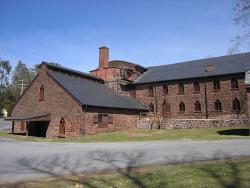On this site, which was the Dutch Flats Airport, Charles A. Lindbergh made the first flight of his Spirit of St. Louis airplane, constructed in 60 days by dedicated employees of Ryan Airlines, Inc. The 20-minute flight on 28 April 1927 was witnessed by those who built the aircraft. Lindbergh describes the flight:
USA
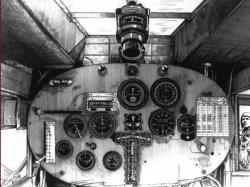

On 15 November 1950, the SSFL conducted its first official test with a Rocketdyne-designed XLR43-NA-1 large liquid propellant rocket engine, which later became the Redstone engine. Encompassing 2558 acres, 18 large static test stands, 5 component test laboratories and an advanced test facility, the SSFL and its dedicated employees have provided significant contributions to U.S. rocketry and space programs for over 50 years.
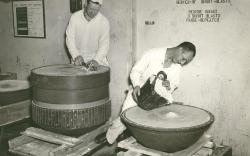
Built in 1880 as the Piccatinny Powder Depot, this site was the major supplier of smokeless powder to the military for many years.
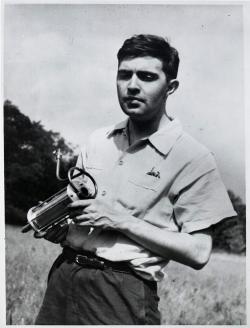
The first company in the United States dedicated solely to the production of the liquid rocket engine, Reaction Motors, Inc. (RMI) was formed in 1941. Its four founders were rocket enthusiasts and members of the American Rocket Society. RMI developed the rocket motors that powered the first supersonic flight, that of the X-1; the retro rockets for five NASA surveyor lunar soft landers; and prepackaged liquid rocket engines for the U.S. Navy Bullpup A & B air to ground missiles, among many other pioneering programs.

This site, formerly known as Oakland Municipal Airport, served as the gateway to the Pacific during aviation’s pioneering age of trans-Pacific flight. Among other notable events, Albert Hegenberger and Lester Maitland departed from the airfield on 28 June 1927 on the first flight from the mainland to Hawaii, and Amelia Earhart landed here on 13 January 1935, completing the first-ever solo flight from Hawaii to the mainland.
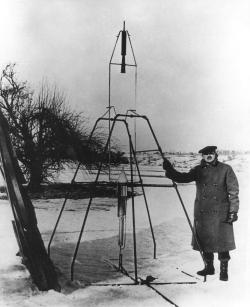
On March 16, 1926 Dr. Robert H. Goddard, also known as "the father of modern rocketry," launched the world’s first liquid propellant rocket from a point 1000 feet S.S.E. of the plaque on the property of the Asa M. Ward Family. Erected by the American Rocket Society July 13, 1960 in recognition of this significant achievement in the evolution of astronautics.

This rocket propulsion test complex was created to flight-certify all first and second stages of the Apollo Saturn V rocket. The first test-firing occurred on April 23, 1966. Subsequent to the Apollo Program, these test stands were modified to support the testing requirements of the Space Shuttle Main Engine. Every astronaut who traveled to the moon aboard Saturn V Rockets and into space aboard the Space Shuttle, did so on rocket stages and engines that were first proven flight-worthy on these test stands.
The Cincinnati Observatory, “The Birthplace of American Astronomy,” is the oldest professional observatory in the United States. Ormsby MacKnight Mitchel, the “Father of American Astronomy,” founded the observatory in 1842. John Quincy Adams laid the cornerstone for the observatory on Mt. Ida, later renamed Mt. Adams. The original Merz und Mahler 11-inch refractor telescope was put into service in 1845 and is still in use here today on Mount Lookout.
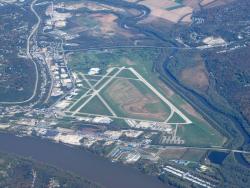
Lunken Field, now also known as Cincinnati Municipal Lunken Airport, opened in 1925 on ground purchased from the Cincinnati Polo Club. The nation’s largest municipal airport at the time, it attracted several aerospace enterprises, starting with early aviator J. Richard “Dixie” Davis, who established his barnstorming enterprise there in 1925. In 1928, several other firms established enterprises at the field – each making history.

The 1940 Air Terminal is a beautiful and rare example of classic art deco airport architecture from the golden age of flight. Designed by noted architect Joseph Finger, the Terminal was built to meet Houston’s growing role as a major center for air commerce in the 1930s. Its grand opening by the City of Houston took place on September 28, 1940, at Houston Municipal Airport, now known as Hobby Airport.
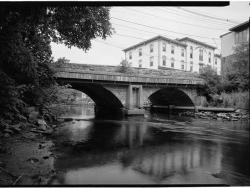
The Choate Bridge of Essex County, completed in 1764, is the oldest documented two-span masonry arch bridge in the United States. Named after Colonel John Choate, who supervised the construction, the bridge is located on South Main Street and spans the Ipswich River. Originally, the bridge…
Read More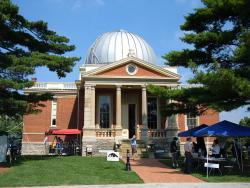
The Cincinnati Observatory, founded by Ormsby MacKnight Mitchel in 1842, is America’s oldest public/professional observatory. The observatory was situated on Mt. Adams, east of the current downtown Cincinnati; the hill was named for former President John Quincy Adams when he laid the observatory…
Read More

Constructed on 1,040 acres just 10 miles southwest of the city center, the Cleveland Hopkins Airport was the first major airport in the world to provide an integrated system of paved landing surfaces, lighted runways, and a terminal complex consisting of hangars and operating facilities.…
Read More


Stretching 242 miles from the Colorado River on the California-Arizona border to its final holding reservoir near Riverside, California, the Colorado River Aqueduct consists of more than 90 miles of tunnels, nearly 55 miles of cut-and-cover conduit, almost 30 miles of siphons, and five…

A project that combined great engineering ambition and burgeoning civic pride, the Columbia River Highway was built at the dawn of the automobile age out of a desire to bring greater attention to the growing population and natural beauty of the Pacific Northwest. By the time of its completion in…
Read More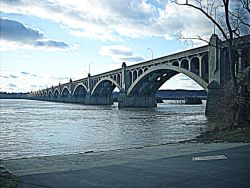
The total length of the Columbia-Wrightsville Bridge is 7,374 feet. Its construction required 100,000 cubic yards of concrete and 8 million pounds of steel reinforcing rods.
Consisting of 28 arches, each 185 feet long, the Columbia-Wrightsville Bridge carrying automobile traffic…


The use of heat pumps for the heating and cooling of the Commonwealth Building, initiated in 1948, was a pioneering achievement in the western hemisphere. The theoretical conception of the heat pump was described in a neglected book, published in 1824 and written by a young French army officer,…
Read More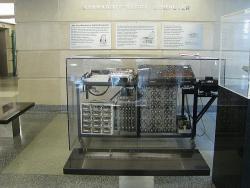
John Vincent Atanasoff conceived basic design principles for the first electronic-digital computer in the winter of 1937 and, assisted by his graduate student, Clifford E. Berry, constructed a prototype here in October 1939. It used binary numbers, direct logic for calculation, and a…
Read More
"This is the first Portland cement concrete street built in the United States ... Here started the better roads movement which has given our citizens from coast to coast swift and sure transportation."
- Historic marker, Bellefontaine, Ohio, celebrating the 50th anniversary of…
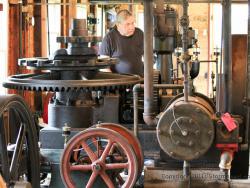
Early internal combustion engines produced only a few horsepower and were unable to replace steam engines in most applications until about 1890. By then, they were powerful enough for most portable or remote locations and many small manufactures. By 1900, they were replacing reciprocating steam…
Read More
This compressor was a product of the combined technology and design heritage of both the C. & G. Cooper Company of Mount Vernon and the Bessemer Gas Engine Company of Pennsylvania, which had merged in 1929. Ralph L. Boyer, the chief architect of the GMV, worked for Cooper-Bessemer from 1926…
Read More
These engines, built by Cooper & Co., of Mount Vernon are among the oldest surviving agricultural steam engines to show the evolution from the portable, skid-mounted engine (ca. 1860) to the horse-drawn engine (1875), through the self-propelled but horse-guided engine (1875) and finally to…
Read More
The Cooperative Fuel Research (CFR) engine is used extensively throughout the world for testing, research, and instruction in the performance of fuels and lubricants for the internal combustion engine. Principal design work on this prototype engine was accomplished by engineers of Waukesha Motor…
Read More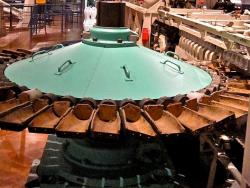

The Cornish-Windsor Covered Bridge is the longest wooden bridge in the United States and the longest two-span, covered bridge in the world. It is also a classic example of wooden bridge-building in 19th-century America. With copious supplies of timber at hand and a generous reserve of carpentry…
Read More